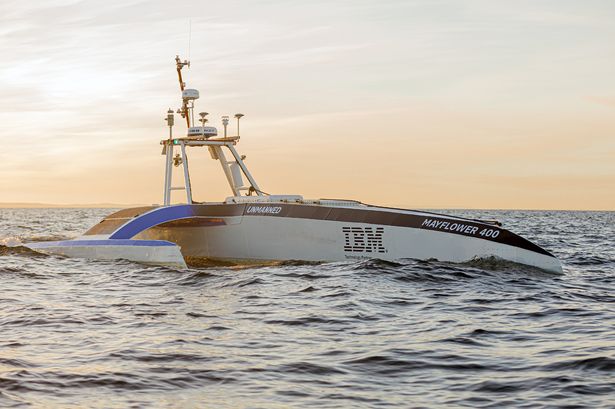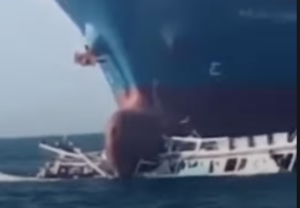Crewless robotic Mayflower ship successfully crosses Atlantic

The Mayflower Autonomous Ship (MAS400) has successfully completed its voyage from England across the Atlantic, landing near Plymouth Rock, Massachusetts.
The crewless robotic ship, which arrived in the States on 30 June, was retracing the 3,500-mile journey from England to the US undertaken by pilgrims aboard the Mayflower in 1620.
The self-operating 15-metre trimaran, which did not have any passengers on board, navigates using artificial intelligence and generates energy using solar power.
The robot research vessel was developed by marine research organisation ProMare with IBM acting as lead technology and scientific partner for the project.
The vessel was meant to make the journey in September 2020, but was left docked in Plymouth due to the pandemic. It made its first attempt at sailing in 2021, but technical problems meant the ship returned to dock. It set off from England again in late April this year, but was forced to reroute to Halifax in Canada due to computer and electrical issues about 1,600 kilometres west of the Azores.
MAS400 finally arrived in Halifax, Nova Scotia, on 5 June, after a 40-day journey. After a successful four-day journey from Halifax, it has now arrived in Plymouth Harbour — the same place the pilgrims arrived over 400 years ago.

The autonomous Mayflower was towed into Plymouth Harbour — per US Coast Guard rules for crewless vessels — and docked near a replica of the original Mayflower ship.
“When you don’t have anybody onboard, you obviously can’t do the mechanical, physical fixes that are needed,” says Rob High, a software executive at IBM helping to work on the project. “That’s also part of the learning process.”
“The voyage’s completion “means we can start analyzing data from the ship’s journey” and dig into the AI system’s performance,” High adds. He said the prospect of such crewless vessels navigating the seas on a continuous basis will make it easier to collect “all the kinds of things that marine scientists care about.”
With no human captain or onboard crew, MAS is said to have been designed as a platform suitable for deepening understanding of critical issues such as climate change, ocean plastic pollution and marine mammal conservation. In parallel, it’s thought the development of marine autonomous systems will transform the shipping, oil & gas, telecommunications, security & defence and fishing & aquaculture industries.

The vessel has been powered by Fischer Panda UK’s electric drive system and generators.
Barry Fower, managing director at Fischer Panda UK, says that the project will have “huge implications” for the maritime industry.
“We are seeing unmanned vessels play an increasing role in many different sectors, with interest in our systems for these applications continuing to grow,” says Fower. “We are proud to see the reliable Fischer Panda equipment onboard Mayflower, alongside some of the most innovative systems and advanced AI technology.”
The original Mayflower was a wooden sailing vessel that carried 102 passengers and took 10 weeks to reach its destination in the autumn of 1620. In 2016, the city of Plymouth proposed marking the 400th anniversary of the Mayflower’s journey with a replica of the ship.











And the point being, driftwood does the same thing, what an absolute waste of resources.
And who is on watch? able to take action if required